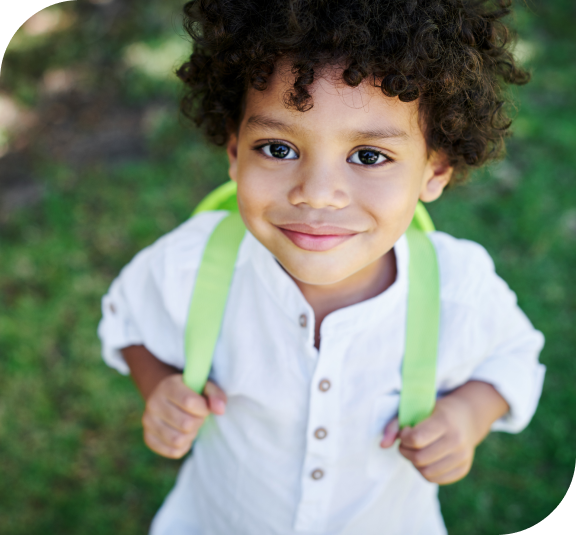
Montessori Method
Knowledge can be best given where there is the eagerness to learn…
– Maria Montessori
Pacifica Montessori implements the Montessori method in full, and all of its teachers are accredited by the Association Montessori Internationale (AMI) and/or the American Montessori Society (AMS). Many schools integrate elements of the Montessori method and will use the name Montessori, but the education they offer is not comparable. There is a much deeper, cumulative effect on children when the Montessori method is fully implemented, particularly over the Preschool and Kindergarten years.
The Montessori method strives to prepare children for everything their lives will bring. It nurtures the development of the whole child, fostering independence, self-esteem, strong moral character, and a lifelong love of learning.

Dr. Montessori's Milestones
Maria Montessori, the founder of the Montessori Method, was born in Italy in 1870, and at age 26 became Italy’s first woman to complete a medical degree, specializing in psychiatry. In her work at the University of Rome’s psychiatric clinic, Dr. Montessori treated children whose mental illness had excluded them from the educational system. In her attempts to educate them, she invented her first special apparatus to help them learn through movement, achieving breakthrough results.
Just two years later, at age 28, she became the director of a school for abandoned and mentally disabled children. She spent long hours at the school, observing and developing her approach to teaching, focusing on hands and movement as the bridge to instruction. After two years, she arranged for her pupils to sit for the Italian national school placement tests, and her group, which had been labelled “incapable of learning,” passed successfully. Her immediate question was that if her method achieved such rapid results in children with mental illness or trauma, what might it do for children without those challenges?

In a speech to the International Montessori Conference in 1937, she said:
“Do we believe and constantly insist that cooperation among the peoples of the world is necessary to bring about peace? If so, what is needed first of all is collaboration with children. … All our efforts will come to nothing until we remedy the great injustice done the child, and remedy it by cooperating with him.”
For the rest of her life, Dr. Montessori travelled the world, training, teaching, and lecturing on her conviction that child-centred education was the promise of peace and greater humanity. Having been nominated three times for the Nobel Prize for Peace, she passed away in 1952, leaving an international legacy of schools and training centres that transcend culture, faith, language, and political systems.
To learn more about the exquisite mind and philosophy of Dr. Maria Montessori, we recommend going to the source.
Here is a List of Her Most Famous Books
Famous Montessori Students
Famous Founders of Montessori Schools

